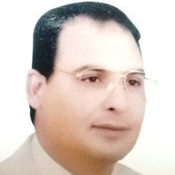Advances in Materials for Separations: Energy and Environment
A special issue of Separations (ISSN 2297-8739). This special issue belongs to the section "Materials in Separation Science".
Deadline for manuscript submissions: closed (31 October 2023) | Viewed by 6787
Special Issue Editors
Interests: adsorption; catalysis; nanomaterials; metal–organic frameworks; environmental nanotechnology; chemical engineering; renewable energy; wastewater treatment; air purification and control technologies; kinetic and isotherm studies; advanced oxidation processes; thermodynamic studies; response surface modeling; bioremediation; bioenergy; waste-to-resource cycle
Interests: catalysis; energy production; organoclay; polymer clay nanocomposite; rheology; oxidation reactions; natural polymers; fuel transportation; recycling
Special Issue Information
Dear Colleagues,
This Special Issue aims to present recent trends in the controlled synthesis and modification strategies of advanced functional materials that play a vital role in the development of adsorption, catalytic, and membrane separation technologies for environmental pollution control and energy generation, conversion, and storage. Approaching this call from the materials science perspective, a remarkable interest in synthesis and modification strategies for functional materials has been observed in recent years, such as (but not limited to) metal oxides, metal nanoparticles, semiconductors, metal–organic frameworks, natural microstructured materials, (bio)polymers, kaolinite/clay, carbon nitrides, nanofluids, carbon-based nanocomposites, etc. Due to the unique properties of these materials, attention has been paid to understanding the relationship between the molecular design of these advanced materials and the structure activity in various catalytic and adsorption-mediated transformation reactions in environmental and energy fields. In particular, attention has been devoted to the design and development of advanced functional materials that synergistically combine the advantages of adsorption and catalytic activities to be effectively applied in the transformation of environmental pollutants into high-added value products, or their use in organic synthesis, clean energy production, and beyond, such as self-cleaning, climate change mitigation, solar energy conversion, water-splitting, and fuel cells. Moreover, the combination of materials science and chemical engineering has recently contributed to the development of modern membranes that are today one of the key separation technologies in chemical, energy, and environmental industries on a large scale, such as gas separation (e.g., CO2, CO, VOCs, SOx, and NOx), air purification, separation of hydrocarbons in the petrochemical industry, chemical separation, and water desalination. As a fact, the recent progress in materials science has contributed to improving the adsorption, catalysis, and membrane separation technologies and their vital roles in the generation of clean fuels, the reduction in greenhouse gas emissions to mitigate climate change, and the sustainable production of clean water.
To this end, the editors welcome original experimental and theoretical studies that address challenges in the designing of advanced functional materials with the latest insights and findings in this research area, such as optimizing synthesis methods, tuning the material features, investigating kinetic and thermodynamic stabilities, and understanding reaction mechanisms. Taking into account real field applications, the objectives of this issue are also focused on publishing applied research that provides an in-depth insight into understanding the relationship between properties (physical, chemical, and electronic) and the performance of tailored materials in environmental conservation and sustainable energy production. In addition, our scope extends to the field of the petroleum industry, especially in the use of nanofluid and natural biopolymers (such as cellulose and chitosan) in the transportation of petroleum fluids, drilling fluids additives, and antifouling/antimicrobial activities. With great pleasure, we invite you to submit full articles, short communication, and reviews to this Special Issue before 30 July 2023 (submission due date). Topics will include, but are not limited to:
- Recent trends in the controlled synthesis and modification strategies of nano/micro-structured materials involved in catalysis and adsorption processes.
- Modern trends in photocatalysis, thermocatalysis, and/or electrocatalysis.
- Advances in functionalized membranes for gas and liquid separation technologies.
- Modern trends in membranes for fuel cell application.
- Advances in H2/CO2 capture and storage materials.
- Applied materials for environmental remediation and protection (air, water, and soil).
- Energy generation (e.g., bioenergy; H2 production, water-splitting, CO/CO2 redox reactions, fuel cells, etc.).
- Advanced materials for biological activity.
- Adsorption separation and recovery of precious elements.
- Thermodynamics of adsorption and catalysis processes.
- Computational modeling of surface–solute interactions at the solid–liquid/ solid–gas interfaces.
- Applied materials in the petroleum industry, gas separation technologies, and enhanced oil recovery.
Dr. Sherif A. Younis
Dr. Mohamed Betiha
Guest Editors
Manuscript Submission Information
Manuscripts should be submitted online at www.mdpi.com by registering and logging in to this website. Once you are registered, click here to go to the submission form. Manuscripts can be submitted until the deadline. All submissions that pass pre-check are peer-reviewed. Accepted papers will be published continuously in the journal (as soon as accepted) and will be listed together on the special issue website. Research articles, review articles as well as short communications are invited. For planned papers, a title and short abstract (about 100 words) can be sent to the Editorial Office for announcement on this website.
Submitted manuscripts should not have been published previously, nor be under consideration for publication elsewhere (except conference proceedings papers). All manuscripts are thoroughly refereed through a single-blind peer-review process. A guide for authors and other relevant information for submission of manuscripts is available on the Instructions for Authors page. Separations is an international peer-reviewed open access monthly journal published by MDPI.
Please visit the Instructions for Authors page before submitting a manuscript. The Article Processing Charge (APC) for publication in this open access journal is 2600 CHF (Swiss Francs). Submitted papers should be well formatted and use good English. Authors may use MDPI's English editing service prior to publication or during author revisions.
Keywords
- materials synthesis and modification methods
- nanofluids
- adsorption kinetics and thermodynamics
- catalysis studies
- functional membranes
- energy production and storage
- wastewater treatment and desalination technologies
- gas separation
- air pollution control
- climate change mitigation
- CO/CO2 redox reactions
- antimicrobial/antifouling materials
- transport mechanisms






